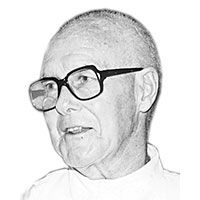The barefoot doctors sixth class

Thirty one tribal natives, in the beautiful costumes which express the unique culture of each tribe, came up on the improvised stage of Our Lady of Peace Hospital on the
They go back to their own homes, to their own tribes, with medical kits, with a supply of medicines, with a manual for Community Health Workers, and with enough training and confidence to take care of the basic medical needs of their own people. They know how to manufacture medicine fromfour own herbs and plants.
This was the sixth class of indigenous people to be trained by the Foundation of Our Lady of Peace Mission. This crash course has now been given to the natural leaders of 118 of our native tribes. Expert doctors, who were willing to give their time and talent, worked with them for three full weeks, opening the doors to the mysteries of medicine.
The tribal natives are swift learners. They do not have much formal schooling, but they are highly intelligent, and eager to learn. Over the years this course has grown to include livelihood, marketing, spiritual values, leadership training, how to organize their own self government, how to defend the deep human rights that God has given them.
Carlos Buason, Director of the National Commission for Indigenous People, said at the graduation: “This is something that we should have done, long ago. The native tribes, represented here, are the treasure of this nation. We all know that. . . . . But there is a great valley and a chasm between knowing what we should do, and actually doing it!”
These were the students in this sixth class:
• Allan M. Pahanay, Kadingilan, Bukidnon; Alvin T. Sandag, Damulog, Bukidnon; Emelie P. Baluan, Bentangan, Carmen, Cotabato; Gilda A. Hermosa, Digos City, Davao del Sur; Ruby P. Dumaog, West Kabawe, Bukidnon — Manobo
• Jaunito L. Campong,
• Daisy P. Capellan, Botolan, Zambales; Lanie D. Cosme, Iba, Zambales; Mylene B. Atanacio, Bololan, Zambales; Shirley C. Famisan, Sacalihan, Subic, Zambales — Aeta
• Liway M. Jugatan, Binhawo, Zambales — Aeta-Abelling
• Dario G. Bugtong, Nueva Vizcaya — Iwak
• Delma C. Wano, Maricel M. Sakilan, Tita S. Tusan, Malita,
• Vizminda M. dela Cruz, Malita,
• Elizabeth A. Bitco, Malungon, Sarangani Prov. — Tagakaolo
• Emily Q. Mardo, Infanta, Pangasinan; Virginia D. Ayodoc, Losad Sabangan,
• Ernesto M. Alfonso, Kabunsuan, Cotabato; Lito O. Moseta, Kabunsuan,
• Fe Ann Claire T. Lanipao, Tandang Sora,
• Jeoffrey D. Liquez, Mati,
• Julia R. Barrameda, Veronica O. Domasig, Prieto Diaz,
•
•
• Margie F. Maaba, Poctoy Odiongan, Romblon — Bantoanon
• Pilar B. Acar, Lamitan, Basilan — Chavacano
• Vicente P. Daguman,
What the organizers learned, early on, in the first class, was that bringing all these tribes together is a magnificent movement for peace. Though they were once at war with each other, when a tribal warrior is taking the blood pressure of a man from another tribe, listening to his heart, bandaging his wound, he realizes: “This is not an enemy! This is a man! He lives and feels, he hopes and dreams and suffers just like me!” And they come out of the course good friends!
The second thing that everyone realizes, when they see these tribes all together, is the value of each one’s culture! How much it means to them! How they treasure it!. . . . Development must preserve the beauty, the value of each culture.
City folk sometimes believe that progress for the tribal native means: “Get rid of that colorful native costume! Wear a shirt and pants, like me. Get rid of your ancient lands, customs, rituals. Become one of a million colorless figures, like the rest of us! Let your models be the stars you see on the TV!’
But this country is rich in the beauty of countless cultures. It is like a stained glass window. . . . . We should not try to make our country one dull, dark gray.
And so Our Lady of Peace Mission is determined, somehow, some way, to set up a school for the education of our tribal natives. It will be called: “The
The objective is not only to enable our tribal natives to live in the fullness of life; in the full, proud dignity of man. It is to enable them to become leaders of this country!
We can do this. . . . And we will do it!. . . . . . All things are possible, with God!
- Latest
- Trending



























